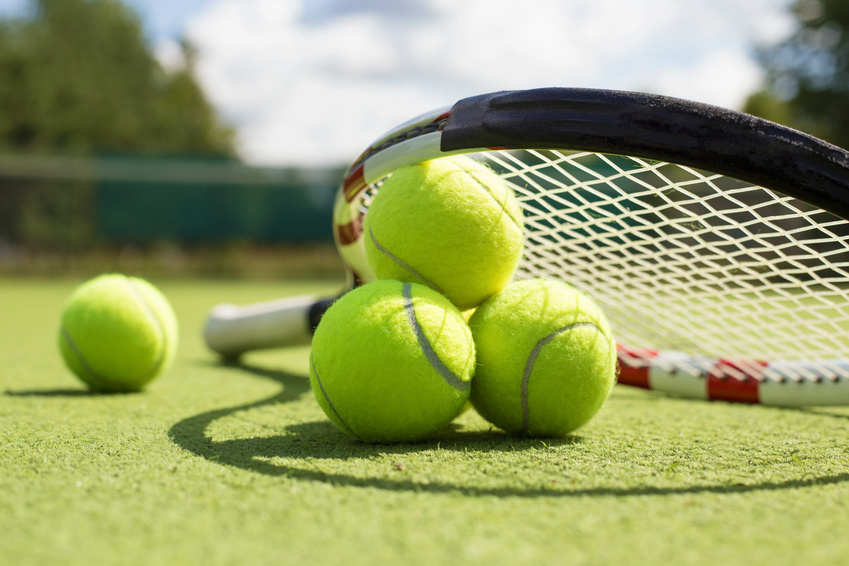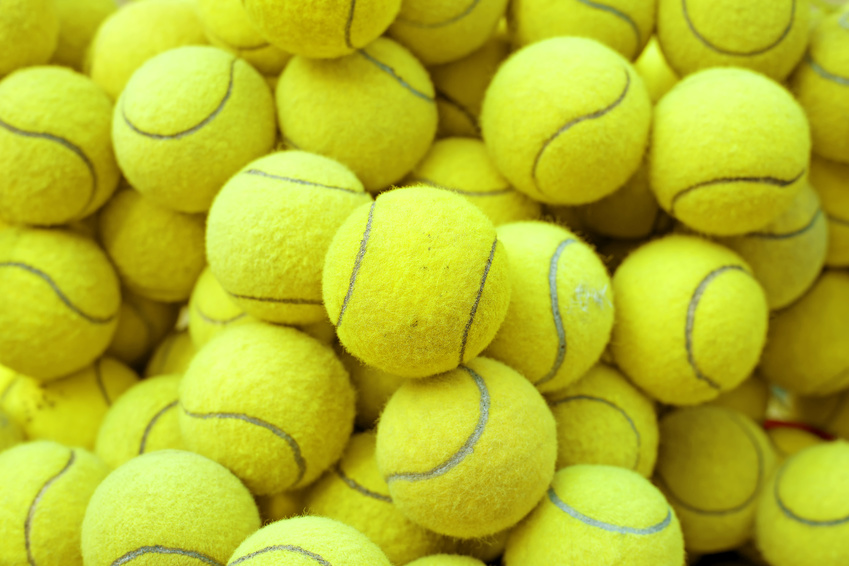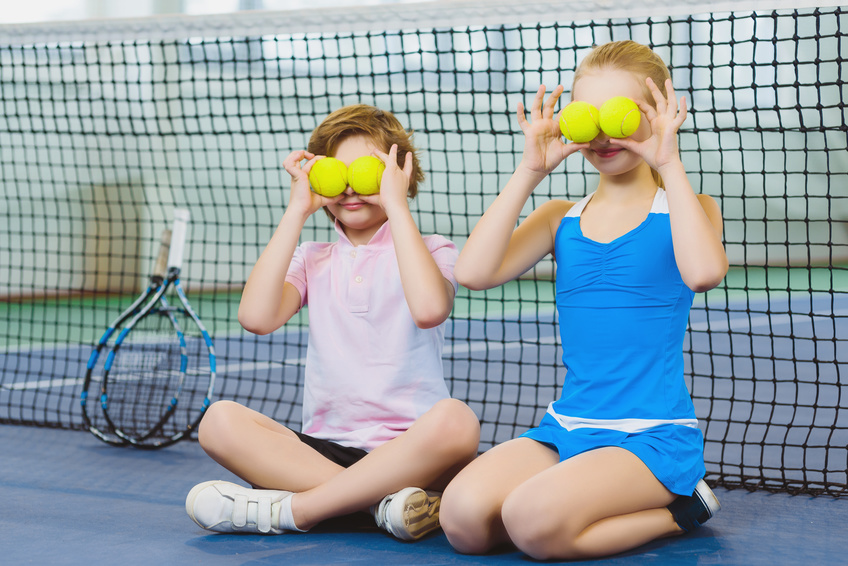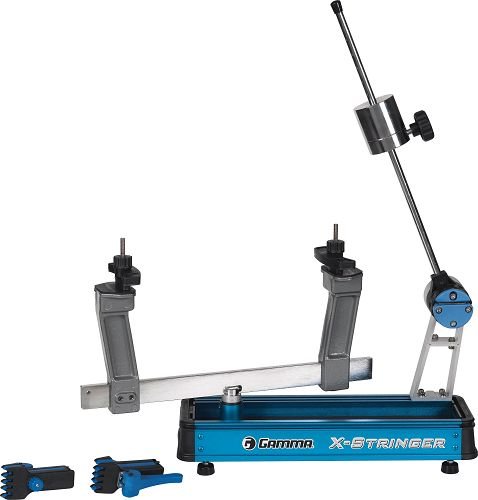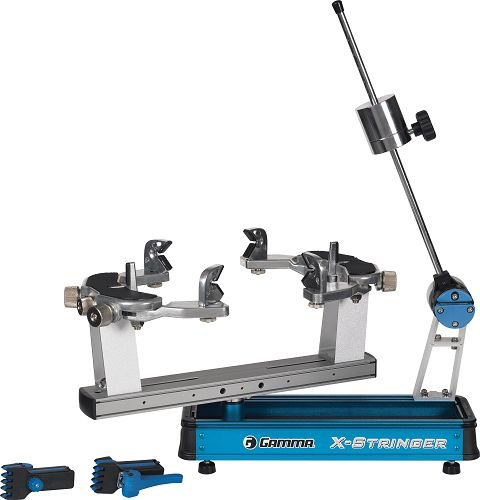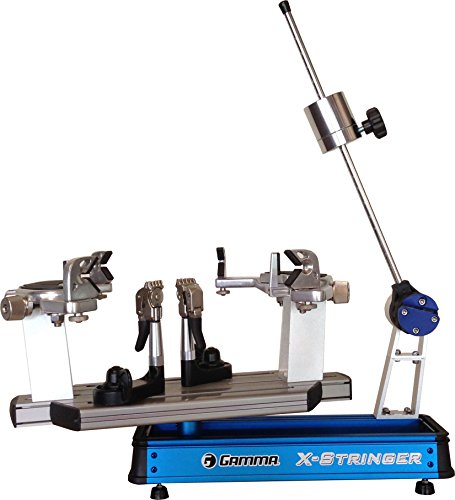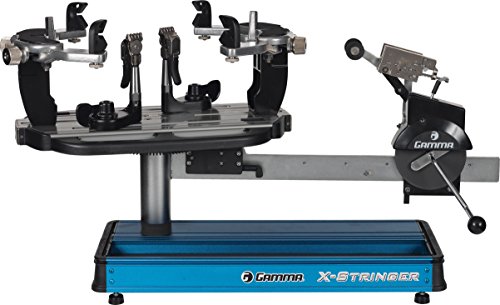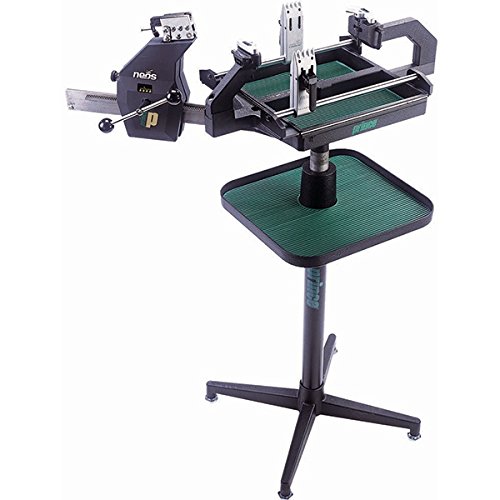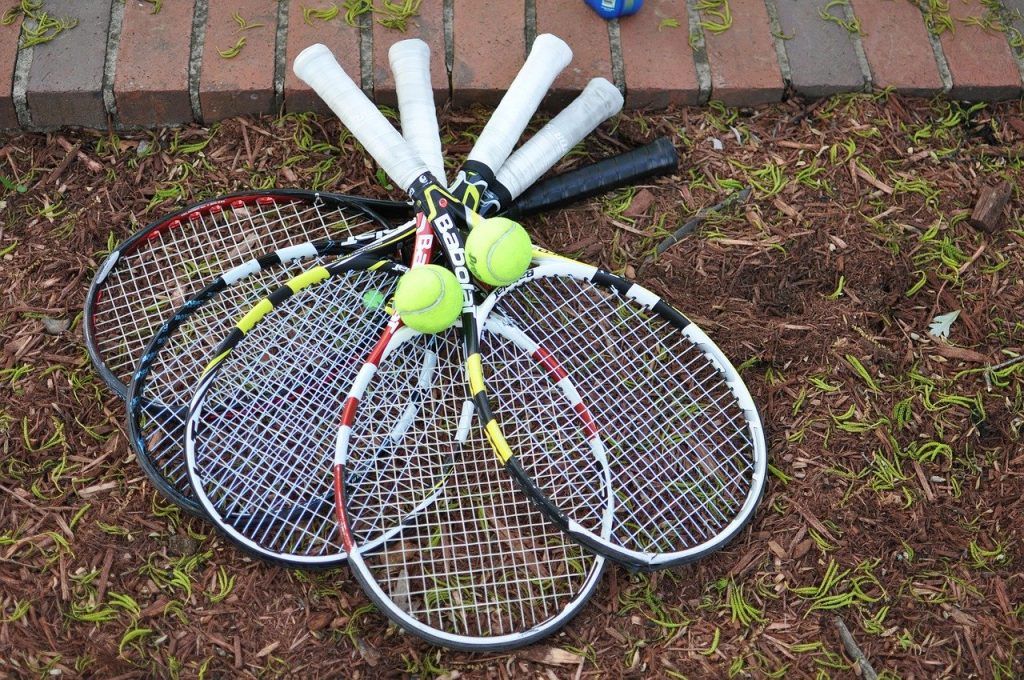Once you have picked a good tennis racquet, the next step is to make sure you have something decent to hold your trusty steed. Something that will protect it from damage and let you carry it around with ease.

If you’re in the market for a tennis racquet bag you’ll be spoiled for choice. There is a bag to suit every player’s needs, whether you take lessons a few times a week, play a couple of social games on the weekend or are a serious pro, and a bag for multiple racquets. A well-designed tennis bag should also have space for everything else you need for a day out on the court.
Never before has there been such a range of tennis bags available, from practical to stylish to stylish and practical; it needs to be functional and while all your tennis gear should fit in so too should the bag fit your budget!
Here are our best bag options for your tennis racquet, including the best single racquet bag as well as tennis bags for 3 and 6 racquets.
Our Top Bag Picks
Best Single Racquet Tennis Bag / Backpack: Nike Court Tech 2.0
Nike is a name synonymous with sporting apparel and equipment and even with newer brands popping up and older names getting a bit of a revival, the famous Swoosh still holds its own when it comes to durability, quality, value for money and style.
The Nike Court Tech 2.0 Tennis Backpack is perfect for players wanting to travel light with one or two racquets. The backpack is made from a densely woven polyester and has a separate carrying compartment for your racquet. It comfortably fits, but you can carry two without the backpack feeling bulky. For the rest of your gear – shoes, change of clothes, shower items – there is another section and there are two smaller front pockets for your wallet, mobile phone, keys, etc. While a water bottle or tennis balls can be kept in the side mesh pockets.
The simple but stylish design is made for comfort, with the backpack well-padded and the Max Air straps ensuring you don’t start the game off with aching shoulders or a sore back. Whether it’s for a quick workout at the gym, a casual day on the courts or for college or school, the Nike Court Tech 2.0 tennis racquet bag is well-made and affordable, which is why it’s on our list as one of the best tennis bag options.
Best 3 Racquet Tennis Bag: Wilson Advantage II Triple Bag
The Wilson Advantage II Triple Bag has space for up to three tennis racquets and players rate it for its durability, quality, and convenience. The different compartments are zippered so none of the contents can fall out and there is extra space for personal items like your wallet, phone, and keys.
Wilson is a name known for its quality products and the Advantage II Triple bag only adds to that reputation. There is a top handle if you want to carry the tennis bag ‘suitcase’ style and it has an adjustable shoulder strap with extra comfortable padding.
Even with three racquets, the bag isn’t cumbersome and in terms of looks, it is true to Wilson’s simple but elegant design. The Advantage II Triple Bag makes our best tennis bag list because of its price and if you’re not into all the bells and whistles, it does the job it was intended for very well.
Best 6 Racquet Tennis Bag: Adidas Barricade IV Tour 6 Racquet Bag
Now this is a tennis bag! The Adidas Barricade IV Tour 6 Racquet bag comfortably holds six racquets and there is even a shoe compartment for your tennis shoes. Adidas has been around since 1924 when the company was called Dassler Schuhfabrik. In 1949 the name changed to Adidas and an iconic brand was born.
The Barricade IV Tour bag has two main compartments that can take three racquets in each. One of the main compartments has a mesh pocket to keep your smaller items from moving around, which means they’ll be easy to find. There are also several smaller pockets, including a felt-lined pocket for more fragile items like jewelry or sunglasses.
The shoe tunnel feeds into one of the compartment and when you don’t have your sneakers or shoes in it, it can be used for your smelly or wet clothes; opposite this storage space is a Climachill compartment that will keep water bottles or lunch cool. This bag can hold six racquets and be carried in three different ways: there are two grab handles on top of the bag, a removable shoulder strap, and non-removable backpack straps and there’s even a handle to hang it on the fence at the court.
To sum it up the Adidas Barricade 6 racquet tennis bag is an excellent choice: it’s well-made with a lot of attention to detail and given all its feature, it’s very well-priced. Without a doubt, it belongs on our best tennis bag list for 2019.
What to Look for When Buying a Tennis Racquet Bag
There are a few things to consider when buying a tennis bag, and while some are more important than others it’s a good idea to find one that meets at least half of the criteria. A good tennis bag should offer you:
- Ample storage
- Compact design
- Portability
- Comfort
- Versatility
- Affordability
- Style
Storage
When deciding on a tennis bag storage is important. If you’re a casual player then a single or dual racquet bag will be more than enough. If you’re actually a casual player but consider yourself to be a pro then a bag that holds three or four will serve its purpose and boost the ego. But for serious players who have a lot of racquets, you would do better to get a bag that can hold 6, 9, 12 and even 15.
Of course, storage is more than just how many racquets you want, or need to, carry around with you. You need to consider how much storage space is left for clothes, shoes, showering items, keys, wallet, phone and whatever else you might need. Some bags claim to hold 6 racquets, but they’re better suited to 3 or 4 and others boast about having ample space for everything including the kitchen sink, but once it’s got a racquet inside, that’s all it can handle.
Compact Design
A well-made tennis bag that has been designed will be able to hold tennis racquets, clothes, drinks, balls, as well as other personal items, while still being compact. They often have Thermal Guard Technology and a waterproof sack or compartment for wet or smelly clothes, while dry and clean clothes can be kept in another compartment. A lot of the bigger bags will have a storage space for tennis shoes too, and of course, there should also be space for water bottles, lunch, snacks,
Portability
This might sound like a strange one if you consider that all tennis racquet bags are made to travel and would, therefore, be portable, but what we mean is the ease and convenience when on the move with your bag. Most bags have padded backpack straps for travel, keeping the player’s hands free; while a carry handle is fine if you’re walking from the change room to the court. Senior players might prefer a tennis bag with wheels if they’re walking long distances. Whichever one you choose make sure the straps and handles are padded and that everything inside the bag will travel well.
Lightweight
A lightweight bag will ensure you don’t waste energy before you’ve even gotten on the court. The weight of the bag has nothing to do with the size; bags that can accommodate 9 or 12 racquets can weigh less than a bag for one. It comes down to the materials used, whether there’s a frame of some sort and the design. Don’t forget to keep this in mind when choosing a bag – look at what it weighs with tennis gear, as well as when it’s empty.
Comfort
The comfort of a bag is a big deal, especially if you’re a pro who plays often or travels internationally for games. Buying a larger bag that will comfortably hold everything makes more sense than choosing a compact one which holds the least amount, which will more than likely mean traveling with additional bags. Also, make sure backpack straps are well-padded, and if it’s a carry handle you want it to fit comfortably in your hand.
Versatility
You want a bag that offers some versatility, from the shape and the size, to how everything fits and how you can carry it. A backpack probably provides the least carrying capacity but is perfect for tennis practice once or twice a week or a weekend game every now and then. Shoulder bags can be more stylish, hold more and your items stay in their place – think about storage capacity, design, and comfort when you’re considering the bag’s versatility.
Sturdy
When we talk about sturdy we mean how well the bag holds up with regular use but also if all the parts of the whole are durable too. A lot of tennis bags today have all sorts of technology to keep things cold, some things dry while others are wet and odorless from shoes and damp clothes being in the bag. There are moisture protective compartments to store wet items and thermal guard technology to keep tennis racquet strings dry and undamaged. You want a bag that offers all these things including a solid frame that won’t fall apart within a month or two.
Shoulder Straps
Talking about technology, this is even used with the shoulder straps of a backpack. The straps need to be padded for additional comfort, preventing shoulder, back, and even hand pain and the padded foam provides ventilation to keep the excess heat off so to minimize sweating. The technology used is called “climacool” and is used especially with backpacks or tote bags that have a carry handle and backpack straps.
Carry Handle
A carry handle is key to a comfortable tennis racquet bag. There are some styles of tennis bags, like the tournament bag, that don’t have straps but have a carry handle instead. Although logic tells you this can’t be more comfortable than a backpack, it actually is. The handle is usually well-padded and with larger bags, there is a normally a carry handle and wheels. You need to decide of the two bags which would be more suited to you.
Affordability
Always a determining factor is price. A tennis bag doesn’t have to equal the winnings of the US Open to be a good one. There are some well-priced, well-made bags that ooze style and comfort and come in under $50. Tennis bags that serve their purpose range between $20 and $150, with the most expensive ones usually being bags that can hold 6, 12 or 15 racquets.
Style
Style is the name of the fame when it comes to tennis bags and you won’t battle with the choice available. There are tote and duffle bags, backpacks and carry bags. Some high profile tennis players have signature bags that you can buy and other tennis bags have limited branding and logos. Color-wise there are bags that stick to the classic combinations, while others are multicolored and bright. Some bags have loads of compartments and pockets while others only have space for a racquet.
Conclusion
When it comes to choosing the best tennis bag for you, it comes down to your personal taste – from the style, color, and what it’s made of, it’s completely up to you. There are so many to choose from, and if you’re in a position to have more than one, then all the better.
Serious tennis players need seriously cool tennis bags; not only do they offer comfort, functionality, and style, they’re also an extension of your personality. The top rated tennis bags all share the same things in common – they’re made from durable materials, they have ample space for racquets and other gear, and they’re names you can trust. Our top 3 bags are fairly conservative in terms of color and design but there are so many more to choose from, from vintage styles to anniversary and limited editions as well as bags endorsed by some of the top tennis players in the world.
A bag must be functional but with the wide range available, they can be stylish too.
Choose a tennis racquet for your bag with this guide.
![Best Tennis Bag Reviews & Guide [2019 edition]](https://serbiaopen.rs/wp-content/uploads/2021/04/Best-Tennis-Bag-Reviews-Guide-2019-edition.jpg)



